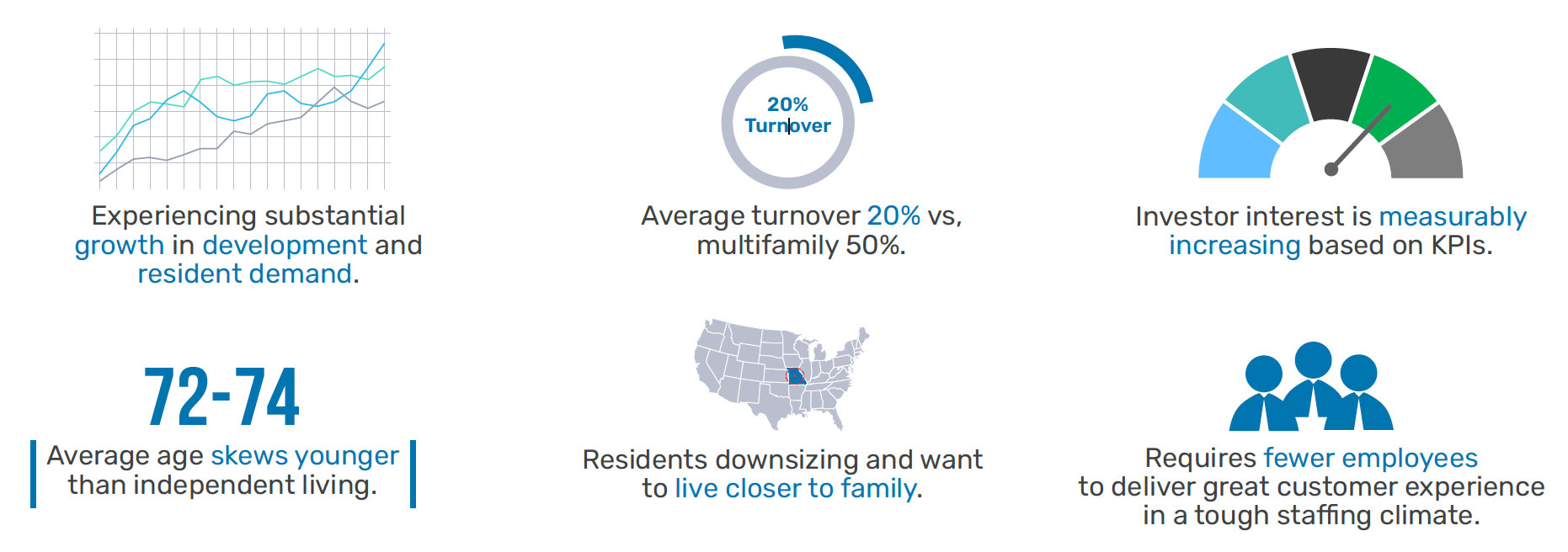ANNAPOLIS, Md. — The National Investment Center for Seniors Housing & Care (NIC), an Annapolis-based nonprofit firm that tracks industry data, has unveiled its first industry-wide definition of the active adult sub-segment with the intent of better guidance for investors.
Active adult residents are typically younger and healthier than people in today’s senior housing communities. Active adult properties do not require healthcare licensure, involve fewer resources to operate, and experience less frequent turnover, making them attractive investments, while satisfying older baby boomers’ emerging housing needs.
NIC experts say active adult housing caters to millions of baby boomers with lower acuity health needs and a preference for an active, community-based lifestyle lived alongside generational peers. It fills a market need and serves as a bridge between conventional multifamily housing and traditional senior living options.
“Aging baby boomers value their independence but increasingly appreciate the opportunity for engagement that comes with residing amongst a vibrant community of people with similar interests and expectations,” says Brian Jurutka, president and CEO of NIC. “By formally defining this segment, NIC is enabling centralized data collection on the segment and opening the door to additional investment that will increase access and choice for millions in a vital, emerging market.”
While the availability of data for investors in active adult rental properties has been sparse, NIC’s definition of the active adult segment enables its affiliate NIC MAP Vision to collect segment-specific data. This affords investors and other market stakeholders data on more than 200 active adult properties across the nation, such as their characteristics and financial performance.
More robust data, including operational performance and additional property coverage, is expected in early 2023.
To access the NIC white paper, click here.

